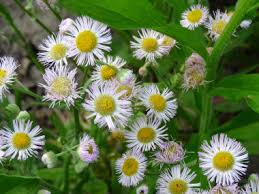 When my friend “Russell”–the name he requested I call him in this column, though it’s not the name he goes by–quit mowing his lawn last fall, it wasn’t necessarily to become part of a world-wide movement to save the pollinators.
When my friend “Russell”–the name he requested I call him in this column, though it’s not the name he goes by–quit mowing his lawn last fall, it wasn’t necessarily to become part of a world-wide movement to save the pollinators.
Russell contacted me via Facebook after I posted my April 16 column, in which I attempted to wax poetic about the wonder of dandelions. “To see my yard, you might think ‘that guy doesn’t care’,” he wrote. “But I’d rather have tall grass and wildflowers than some poisoned, lifeless spread.” I considered that message an invitation to see Russell’s yard for myself. When I asked if I could, he said yes.
Though Russell has been living in a suburban neighborhood not far from Tennessee Tech for the past nine years, he spent his childhood and much of his adult life on a working farm in a neighboring county. About 20 years ago, he decided to learn the name of every tree and wildflower that grew on his property. Not coincidentally, he also learned what a vital role wildflowers play in the survival and health of pollinators.
Over the last several decades, the numbers of many pollinating creatures—including bats, bees, beetles, birds and butterflies—have drastically declined due to disease, loss of habitat, the spread of non-native invasive species and the misuse of chemicals. Without pollinators, only the wind is left to spread nectar and pollen, which is vital for fertilization and therefore the survival of the crops we use for foods, beverages and medicines.
Back in 2019, in England, the conservation charity “Plantlife” launched an effort called “No Mow May,” which encouraged folks to leave their lawns unmown for the entire month so that wildflowers and pollinators could thrive. When June came, participants were encouraged to adopt a modified mowing regimen by mowing less frequently, by raising mower blades significantly and by leaving parts of the lawn unmown altogether. These ideas soon spread to other countries, including the United States.
Russell didn’t set out to join a global conservation movement when he parked his mower in the shed last September. “I didn’t necessarily intend to grow a natural yard,” he told me. “I just let it do its thing.”
His yard is filled with a wide variety of wildflowers, including May apples, white clover, sow thistle, wild violets, hen bit, spring beauties, bugleweed, wild strawberries, fleabane, false Solomon’s seal and—of course–dandelions. More than a dozen varieties of trees grow there, too. And, yeah, once I arrived on Russell’s street it was easy for me to spot his yard, although it has no sign that says I’M DOING THIS FOR THE BEES or other such sentiment.
When I asked Russell how his neighbors feel about his natural lawn, he said that a couple of them have commented about it but that no one has complained. And though he lives inside the Cookeville city limits, he’s received no codes violation warnings. In the weeks that have passed since I visited with him, I can’t shake what he’s doing from my mind. It’s changed the way I think about my neighbors who “let their grass go” by mowing only occasionally and about what I’d like to do with my own yard. Perhaps it’s time we all consider creating a different kind of lawn by replacing grass with trees and wildflowers and fruits and vegetables and herbs. Perhaps it’s time to sow clover rather than fescue. Perhaps it’s time to rethink our use of fertilizers and poisons.
As for Russell’s yard, eight months have passed since he’s mown it. He’s not sure how much longer he’ll try to extend that streak. But he is sure that, while it grows, he’ll continue to enjoy the birds and bees and flowers and trees that live there.
(May 21, 2022)